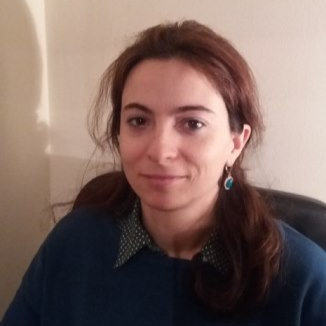Biological Membrane Dynamics and Reorganization Induced by Light Changes
A special issue of Membranes (ISSN 2077-0375). This special issue belongs to the section "Biological Membrane Dynamics and Computation".
Deadline for manuscript submissions: 30 June 2024 | Viewed by 2293
Special Issue Editors
Interests: chlorophyll a in model and native thylakoid membranes (cyanobacteria, algae, plants); induction of membrane and protein changes by chlorophyll a; unique membrane properties of chlorophyll a compared to the other photosynthetic pigments; chlorophyll–lipid and chlorophyll–protein interactions; lipid phase transitions and non-lamellar phases; hydrophobic mismatch; membrane dynamics and reorganization; cytochrome b6f complex; state transitions
Interests: photosynthesis; thylakoid membrane; structural rearrangements; pigment–protein and lipid–protein interactions; non-lamellar lipid phases in biological membranes
2. Institute of Biophysics and Biomedical Engineering, Bulgarian Academy of Sciences, Sofia, Bulgaria
Interests: Thylakoid membrane macroorganization; adaptation of the photosynthetic apparatus to environmental stress; photosynthesis and green energy production; algal biotechnology
Special Issue Information
Dear Colleagues,
Oxygenic photosynthesis is a vital bioprocess supplying us with oxygen, food, raw materials, etc. Its primary light processes (i.e., light harvesting, excitation energy and charge transfers) and their regulation are performed in the thylakoid membranes of cyanobacteria, algae and plants. Activation of fast regulatory mechanisms (in the timescale of seconds and minutes) ensures optimization of photosynthetic efficiency and protection of photosynthetic apparatus in ever-varying environmental conditions (light quality and intensity, temperature, water availability, etc.). The fast regulatory mechanisms (state transitions, non-photochemical quenching, photosynthetic control, etc.) proceed via dynamic structural reorganizations of the photosynthetic integral membrane proteins, peripheral proteins and in some cases with enzymes’ activation.
In addition to being the most abundant biological membrane, thylakoids are attractive with their evolutionarily conserved lipid composition involving four unique lipid classes and high abundance of non-lamellar lipids. Clarifying the role of thylakoid lipids (beyond their role for membrane fluidity) in the induction and realization of the fast regulatory mechanisms has recently emerged as one of the hottest topics in membrane biophysical studies on thylakoid membranes. Exciting recent studies have shed light on the possible role of protein/lipid hydrophobic mismatch as a driving force in state transitions and non-photochemical quenching. Furthermore, the thylakoid lipid phase behavior emerged as a factor for the photosynthetic supercomplexes’ macroorganization and the activation of water-soluble thylakoid enzymes involved in photoprotection. Understanding the role of lipids in the dynamic structural reorganizations of thylakoid membranes is not only of fundamental scientific importance, but also a step towards finding photosynthesis-inspired solutions in (bio)membrane-based innovative applications.
We are pleased to invite you to publish your recent findings and hypotheses related to the roles of lipids in the above noted dynamic structural reorganizations of thylakoid membranes. Original papers and review articles on other biomembranes focusing on the role of lipids in dynamic structural reorganizations induced by light changes are welcome as well.
We look forward to receiving and publishing your contributions to the Special Issue “Biological Membrane Dynamics and Reorganization Induced by Light Changes”.
Sincerely,
Dr. Radka Vladkova
Prof. Dr. Sashka Krumova
Dr. Nia Petrova
Guest Editors
Manuscript Submission Information
Manuscripts should be submitted online at www.mdpi.com by registering and logging in to this website. Once you are registered, click here to go to the submission form. Manuscripts can be submitted until the deadline. All submissions that pass pre-check are peer-reviewed. Accepted papers will be published continuously in the journal (as soon as accepted) and will be listed together on the special issue website. Research articles, review articles as well as short communications are invited. For planned papers, a title and short abstract (about 100 words) can be sent to the Editorial Office for announcement on this website.
Submitted manuscripts should not have been published previously, nor be under consideration for publication elsewhere (except conference proceedings papers). All manuscripts are thoroughly refereed through a single-blind peer-review process. A guide for authors and other relevant information for submission of manuscripts is available on the Instructions for Authors page. Membranes is an international peer-reviewed open access monthly journal published by MDPI.
Please visit the Instructions for Authors page before submitting a manuscript. The Article Processing Charge (APC) for publication in this open access journal is 2700 CHF (Swiss Francs). Submitted papers should be well formatted and use good English. Authors may use MDPI's English editing service prior to publication or during author revisions.
Keywords
- membrane biophysics
- thylakoid membrane dynamics
- dynamic interactions and reorganization
- transient complexes
- dynamic changes in protein–membrane organization
- protein/lipid hydrophobic mismatch as a driving force
- lipid-phase induced enzyme activation
- lipid sorting
- protein oligomerization
- molecular dynamics simulations
- X-ray, cryo-EM and NMR structures








